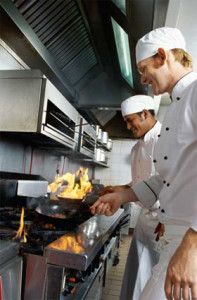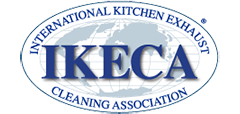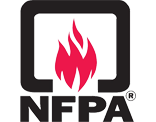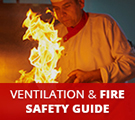Is Your Swamp Cooler Properly Sized?
A properly sized swamp cooler is vital for safe and effective kitchen ventilation
 Kitchen ventilation is all about balance. Hot, greasy air leaving the kitchen through the exhaust hood must be replaced by an equal volume of cool, fresh air in order to keep your system working properly. If your swamp cooler is undersized or oversized, you may find yourself facing significant problems with your exhaust system that can potentially lead to serious fire hazards. Here is some information to help you make sure your swamp cooler is delivering the necessary level of performance to keep your kitchen safe and comfortable.
Kitchen ventilation is all about balance. Hot, greasy air leaving the kitchen through the exhaust hood must be replaced by an equal volume of cool, fresh air in order to keep your system working properly. If your swamp cooler is undersized or oversized, you may find yourself facing significant problems with your exhaust system that can potentially lead to serious fire hazards. Here is some information to help you make sure your swamp cooler is delivering the necessary level of performance to keep your kitchen safe and comfortable.
Know Your Exhaust Load
Obviously, before you know how much replacement air your swamp cooler needs to provide you need to know how much air is being lost through the exhaust hood. Factors like the type of food being cooked, the kind of appliance being used, and the style and position of the exhaust hood will all impact the exhaust load. It’s best to balance the exhaust load and the exhaust rate as closely as possible to avoid unnecessarily high velocities of air moving through the kitchen.
Signs of an Undersized Swamp Cooler
If your swamp cooler isn’t generating sufficient replacement air, you end up with negative air pressure in the kitchen as all of the air gets sucked out through the exhaust duct. This lack of air flow can cause slamming doors as well as the accumulation of hot, smoky air in the kitchen.
Signs of an Oversized Swamp Cooler
Having your swamp cooler supply too much air can also cause problems in the kitchen. The biggest concern is that it can create air currents that will blow the exhaust plumes out of alignment with the exhaust hoods and interfere with the hoods’ ability to capture hot, greasy air. This will lead to grease accumulation and potential fire hazards in areas not necessarily protected by your automatic fire suppression system.
Don’t Expect Your Swamp Cooler to Supply All the Air
According to a publication from the California Energy Commission, it’s recommended that designers plan for a single source such as a swamp cooler to supply no more than 60 percent of the replacement air for the kitchen. The remaining air can be supplied from a variety of sources, including transfer air (from the dining room), integrated hood plenums, or the building’s HVAC system. Be sure to account for the contributions of these other air sources when calculating the necessary capacity of your swamp cooler.
Get Help from the Pros
By calling the pros at Flue Steam, you can get help maximizing the effectiveness of your swamp cooler. We provide expert swamp cooler maintenance and repair services to help you keep your kitchen safe and comfortable.





